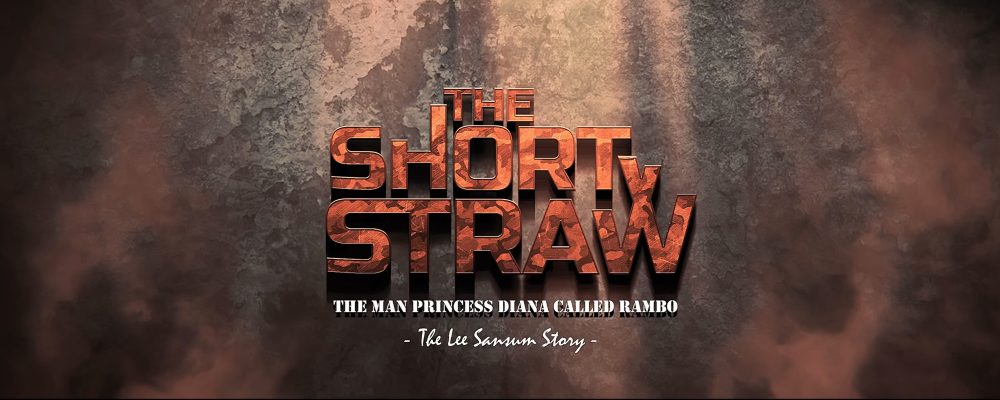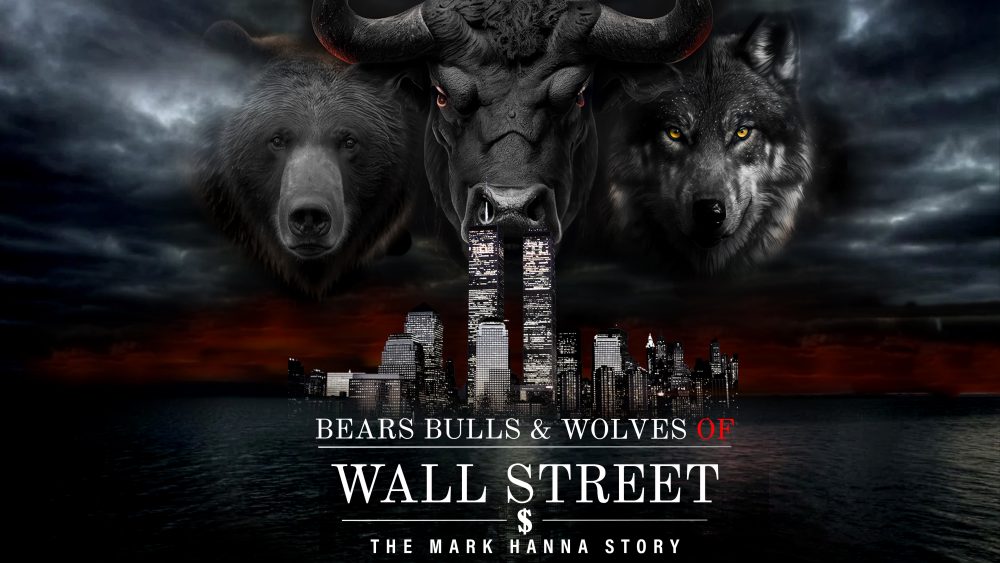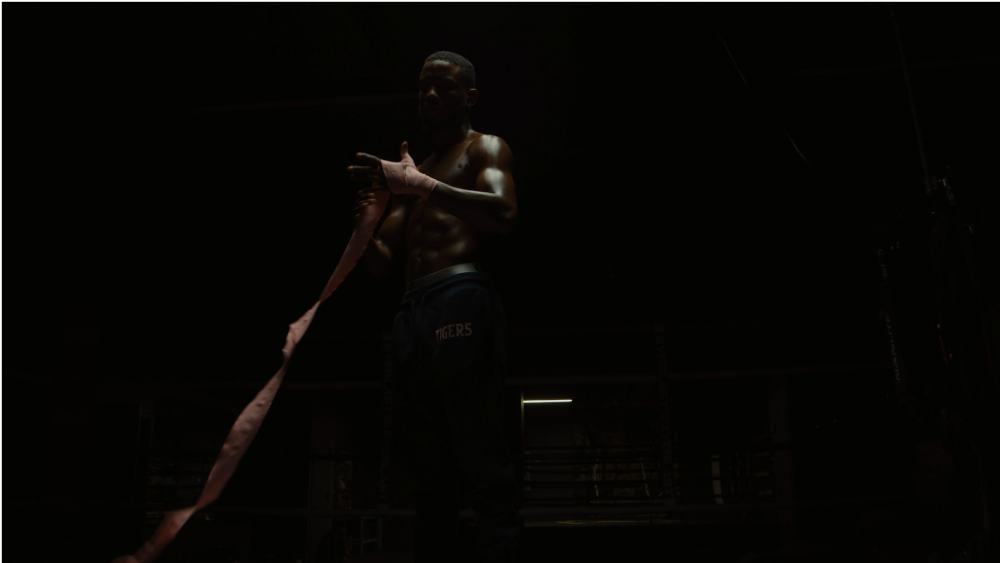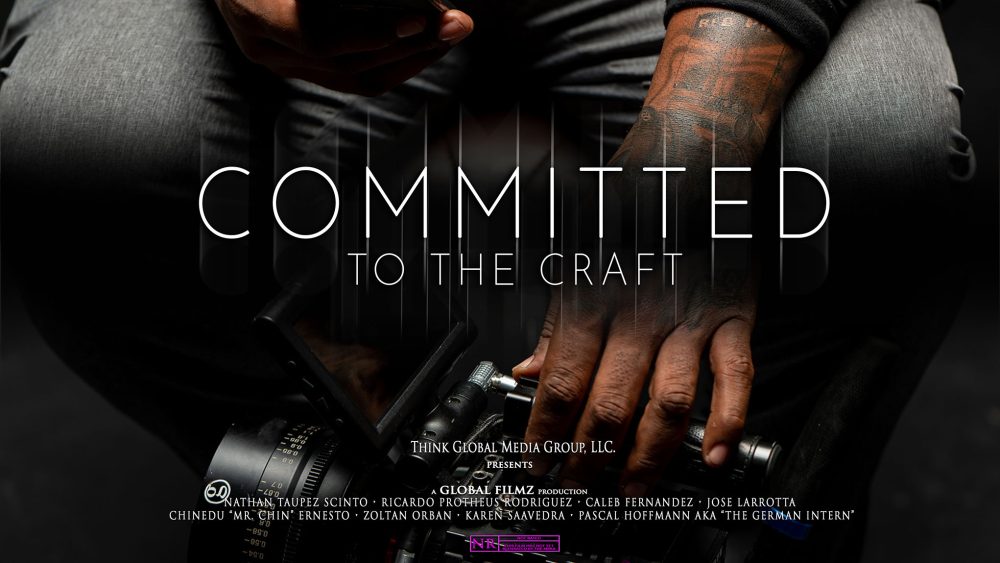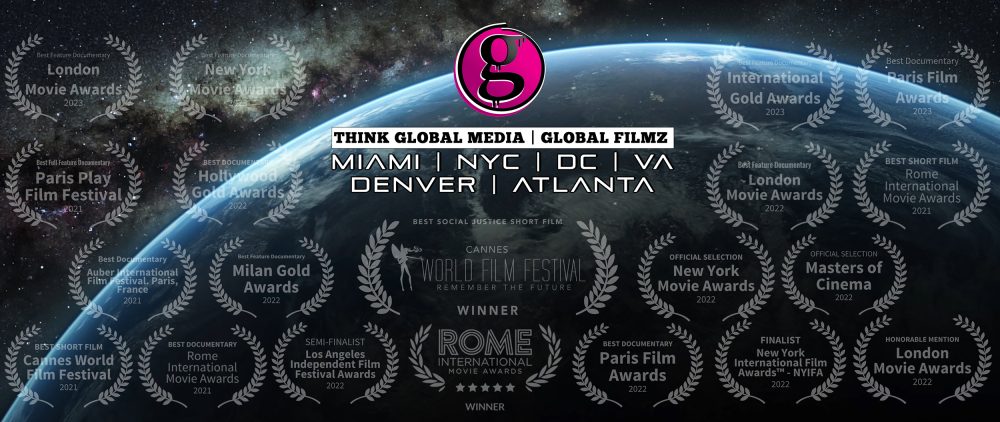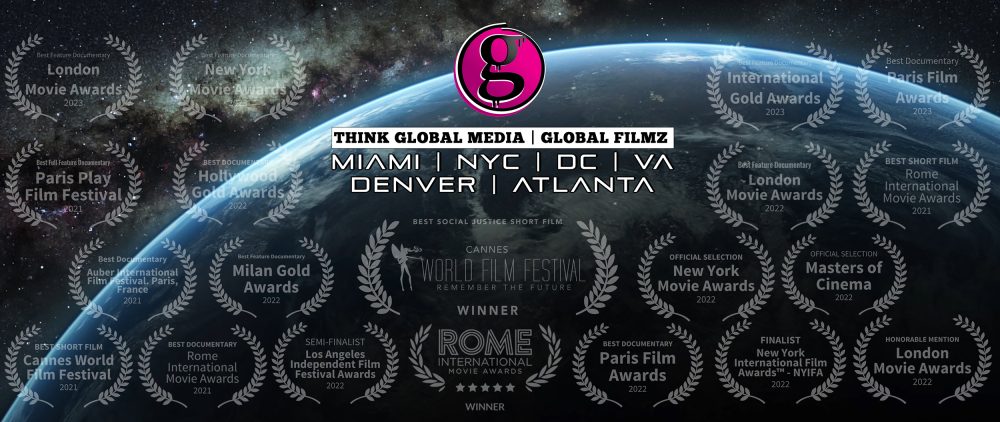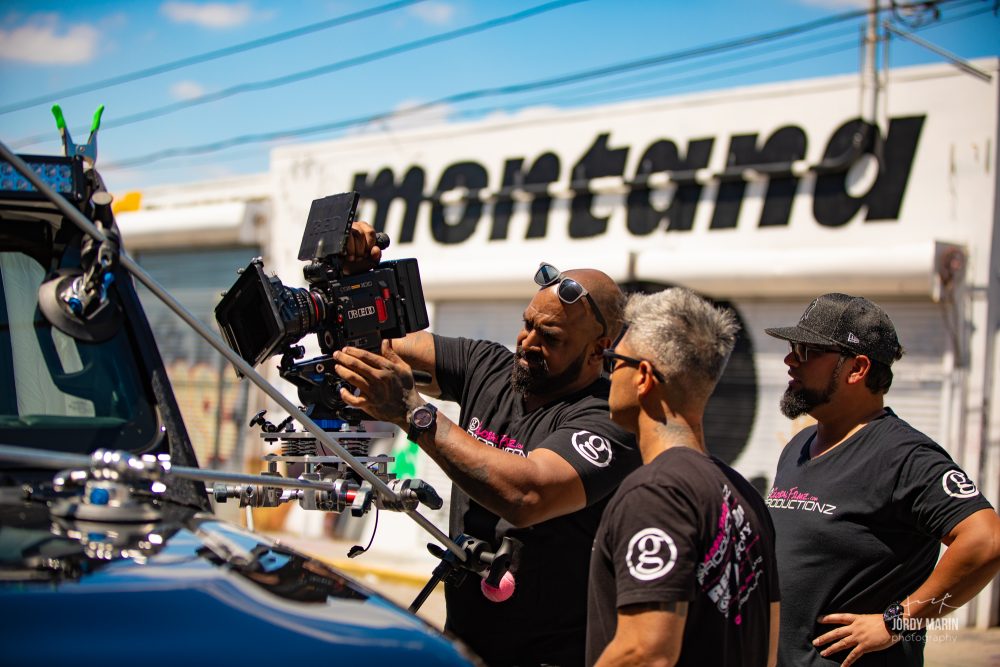
Documentary Film Producer | Director – Washington DC
Documentary Film Producer | Director – Washington DC
1. Navigating the Dynamics: Documentary Producer vs. Director in Washington, DC
Documentary filmmaking is a collaborative endeavor that hinges on the interplay of various roles, with the documentary producer and director serving as two linchpins in the creative process. In the distinctive landscape of Washington, DC, the dynamics between these roles take on a unique flavor. Understanding the nuanced differences between a documentary producer and a director is key to appreciating the depth of their collaborative efforts and the specific advantages they bring to the table in the nation’s capital. Read More
2. The Producer’s Role: Logistical Architect in the Capital City
At the heart of any documentary production, the producer takes on the role of a logistical architect. Responsible for the project’s overall organization, budgeting, and coordination, the producer is the driving force behind the scenes. In Washington, DC, with its labyrinth of political corridors and regulatory nuances, the producer’s role becomes even more critical. Securing permits for filming in sensitive locations, navigating bureaucratic hurdles, and managing the intricacies of governmental cooperation are tasks that fall squarely within the producer’s domain. The ability to weave through the complexities of the capital city’s administrative landscape is a testament to the producer’s acumen.
3. The Director’s Vision: Crafting Narrative and Visual Style in the Political Hub
Conversely, the director brings a creative vision to the documentary, shaping the narrative and visual style. In a city as historically rich and politically charged as Washington, DC, the director’s artistic instincts come to the fore. Capturing the essence of the city’s monumental landmarks or delving into the intricacies of political narratives requires a keen eye and an imaginative approach. The director’s responsibility is to translate the documentary’s theme into a visual language that resonates with the audience, ensuring that the story unfolds with emotional impact and authenticity.
4. Harmonious Fusion: Collaboration in Washington, DC’s Unique Context
The collaborative dance between a documentary producer and a director is where the magic takes place, especially in the unique context of Washington, DC. The producer’s meticulous planning and organizational skills mesh seamlessly with the director’s creative prowess, allowing for a harmonious fusion of practicality and artistry.
5. Leveraging Expertise: Capitalizing on Washington, DC’s Specialized Talent Pool
One of the primary benefits of this collaboration is the opportunity to leverage the wealth of expertise present in the capital city. With Washington, DC, being a hub for political and social discourse, the documentary producer can assemble a team of professionals who understand the nuances of the subject matter. From researchers well-versed in policy intricacies to cinematographers experienced in capturing the gravitas of political events, the producer can tap into a specialized pool of talent that enriches the documentary’s content.
6. Iconic Locations as Visual Canvas: Director’s Artistic Expression in Washington, DC
Moreover, the city’s iconic locations and historical landmarks become a canvas for the director’s creative expression. The juxtaposition of political powerhouses with lesser-known neighborhoods provides a visual tapestry that enhances the storytelling. The producer’s role is to secure access to these diverse locations, ensuring that the documentary captures the multi-faceted nature of Washington, DC. Meanwhile, the director’s ability to infuse these locations with narrative depth and visual impact ensures that the documentary resonates with authenticity and emotional weight.
7. Engaging with DC’s Diversity: Collaborative Synergy Beyond the Set
In Washington, DC, the collaborative synergy extends beyond the immediate production team. The political and cultural diversity of the city offers documentary filmmakers unparalleled opportunities for engaging with experts, policymakers, and communities. The producer’s role is to facilitate these connections, ensuring that the documentary benefits from a rich tapestry of perspectives. The director, in turn, transforms these connections into compelling narratives, bringing to light stories that might otherwise go untold.
8. Capturing the Essence: Power of Storytelling in the Heart of Political and Cultural Intersections
In conclusion, the nuanced differences between a documentary producer and a director come to life in the vibrant landscape of Washington, DC. The capital city’s unique blend of political significance, historical richness, and cultural diversity provides a backdrop where the collaborative efforts of these roles can truly shine. The producer’s logistical prowess and the director’s creative vision converge to produce documentaries that not only inform but also resonate with the complexities and dynamism of the nation’s capital. As Washington, DC, continues to be a focal point for global discourse, the collaboration between documentary producers and directors stands as a testament to the power of storytelling in capturing the essence of a city at the heart of political and cultural intersections.
[/vc_column_text][/vc_column][/vc_row]
Documentary Film Reel
Documentary Film Production Company. Award-winning Documentary Film Producer.
Film production offices in Miami, New York City, Washington, DC, Denver, Atlanta and Virginia.
If you’re looking for a documentary film production company that covers all phases of production, supplies cutting-edge technology, and delivers award-winning documentary film production results – Global Filmz meets the criteria.
Global Filmz has completed over 564 projects in 18 countries and 256 cities to date.
Documentary filmmaking is a personal passion of Global Filmz founder Nathan Taupez Scinto. In fact, his recent documentary “Committed to the Craft” The Global Filmz Story, debuted at the Auber International Film Festival (Paris), Paris Play International Film Festival and Rome’s International Film Festival where it won Best Documentary Feature. The film is currently circulating Cannes World Film Festival as a Finalist and will no doubt snag a few more on its journey through the film festival circuit.
Read MoreNot only can Global Filmz bring your documentary to life, but you can rest assured knowing it will be produced by experienced film industry professionals who have repeatedly proven their talent, dedication, and reliability. Our team will capture the essence of the subject matter at hand, while further captivating audiences with a cinematic film that’s both well-researched and visually stunning.
All the intricate details including location scouting, travel planning, and daily scheduling will be worked out for you. We handle all the pre-production planning, onsite production logistics, and post-production for your documentary project. Film production can be unpredictable but our ability to anticipate a project’s needs and our talent for contingency planning is pretty-impressive. Let us guide your documentary project in the right direction from the start with high end camera equipment, an expert film production crew, and coordinators known to perform logistical miracles on a daily basis.
Even if your project calls for extensive travel – whether it’s here in the United States or overseas our Production Managers and Fixers will handle the tedious logistics. Coordinating travel, location scouting, scheduling and budget breakdowns. Assembling the perfect film crew won’t be affected by your project’s location. Global Filmz employs over 30 full-time filmmakers, we can produce your documentary project anywhere!
We have the ability to create the ideal controlled environment right here in our own studio…
Our Fort Lauderdale-based Smart Studio is equipped with interchangeable film sets, intelligent programmable lighting, a 12-foot high Cyclorama (Cyc) Wall and green screen. Our private dressing room with hair and makeup stations is also included with our studio rentals.
Our Cinematic Camera Packages are any filmmaker’s dream come true…
Film festival distribution is a key component to getting your film in front of audiences, generating a buzz, and landing distribution on major platforms. If you’re looking to create an award-winning documentary, you’re going to need exceptional sound, lighting, and cinematography. Our studio has highly sought-after production gear and editing technology. Achieving beautiful cinematic quality is guaranteed with our exclusive lighting and camera packages.
We have everything from RED digital cinema packages to Arri Alexa Mini camera packages available. Our sound equipment captures pristine audio, you can trust your interviews and voice overs will be recorded with the best the industry has to offer. The cameras we use are all on the approved list accepted by major streaming platforms such as Netflix. Netflix Production Camera Approval List
Post-production is more than just editing, it’s where serious movie magic happens…
At Global Filmz we do more than simply edit footage, we offer comprehensive post-production services. This means we can create custom visual effects including 3D Animation and graphic design elements. If your project needs compositing, VFX, voiceovers, or any additional audio production work, we can handle it all in-house.
We will take your initial concept and seamlessly execute it into a polished masterpiece.
CLIENTS







10 Different Types of Docuseries and Documentary Film Productions Services We Produce!
Documentary productions have become increasingly popular in recent years, offering a unique and authentic approach to storytelling. From thought-provoking films to captivating series, the world of documentaries offers a wide range of styles and formats. Read More
1. Observational Documentary:
Observational documentaries, also known as cinéma vérité or direct cinema, aim to capture real-life situations as they unfold, without any intervention from the filmmaker. These documentaries provide an unfiltered and unbiased view of the subject matter, allowing viewers to witness events in a raw and authentic manner.
2. Expository Documentary:
Expository documentaries focus on educating and informing viewers about a specific topic or issue. They employ various techniques such as voiceovers, interviews, and expert commentary to provide in-depth analysis and context. These documentaries often present a clear argument or perspective, aiming to raise awareness and prompt discussion.
3. Participatory Documentary:
Participatory documentaries involve the filmmaker becoming an active participant in the story they are documenting. This approach allows for a more intimate and personal connection with the subject matter. Filmmakers often engage with the subjects, immersing themselves in their lives and experiences, resulting in a deeper exploration of the topic.
4. Historical Documentary:
Historical documentaries delve into past events, exploring significant moments in history and their impact on society. These documentaries utilize archival footage, interviews with experts, and reenactments to bring the past to life. By examining historical events, these documentaries provide valuable insight into the shaping of our present world.
5. Nature and Wildlife Documentary:
Nature and wildlife documentaries transport viewers into the natural world, showcasing the beauty and wonders of our planet’s ecosystems. These visually stunning productions often feature breathtaking cinematography and narrations that provide insights into the behavior and habitats of various creatures. They serve as a reminder of the importance of preserving our environment.
6. Docuseries:
Docuseries are documentary productions that consist of multiple episodes, allowing for a more extensive exploration of a subject over a period of time. They often follow a thematic or narrative arc, providing a comprehensive and in-depth examination of a particular topic. Docuseries can cover a wide range of subjects, including true crime, historical events, social issues, and personal stories.
7. Autobiographical Documentary:
Autobiographical documentaries provide a deeply personal perspective by focusing on the life and experiences of the filmmaker themselves. These documentaries often blend personal storytelling with broader social and cultural themes. Filmmakers may use personal archives, interviews, and reenactments to create a compelling narrative that allows viewers to gain insight into the filmmaker’s life and perspective.
8. Biographical Documentary:
Biographical documentaries focus on the lives of notable individuals, whether they are historical figures, artists, activists, or celebrities. These documentaries provide an in-depth exploration of the subject’s life, achievements, and impact on society. Through interviews, archival footage, and expert analysis, biographical documentaries offer a comprehensive understanding of the person’s journey and their significance.
9. Autobiographical Docuseries:
Autobiographical docuseries take the autobiographical documentary format to a multi-episode series. This format allows for a more extensive exploration of the filmmaker’s life, providing a deeper understanding of their experiences, growth, and challenges over time. Autobiographical docuseries can be a powerful way to tell a complex and nuanced story, as they offer more room for reflection and exploration.
10. True Crime Documentary:
True crime documentaries explore real-life criminal cases, often focusing on high-profile crimes, unsolved mysteries, or wrongful convictions. These documentaries delve into the details of the crimes, investigations, and legal proceedings, aiming to provide a comprehensive and objective examination of the events. True crime documentaries often incorporate interviews with law enforcement officials, victims, witnesses, and even the perpetrators themselves, along with archival footage and reenactments. The genre has gained popularity in recent years due to its gripping storytelling and the public’s fascination with true crime stories. True crime documentaries not only entertain but also shed light on the complexities of the criminal justice system, raise awareness about important social issues, and sometimes even lead to new developments in ongoing investigations. While these documentaries can be intense and sometimes disturbing, they offer viewers a unique insight into the dark side of humanity and the pursuit of justice. Please note that the purpose of true crime documentaries is not to glamorize or exploit crime but rather to educate and provoke discussions about the causes, consequences, and complexities of criminal behavior.
The world of documentary production offers a diverse and engaging range of formats and styles. From observational documentaries that provide an unfiltered view of reality to docuseries that allow for a more extensive exploration of a subject, each type of documentary brings its own unique storytelling approach. Whether it’s raising awareness, educating, or simply entertaining, documentaries have the power to captivate audiences and shed light on important topics that shape our world.
Producing a Docu-Series | Documentary Film Production
In the realm of documentary production, creating a compelling docu-series requires careful planning, meticulous execution, and a deep understanding of storytelling. Think Global Media, a renowned production company, has mastered the art of producing captivating docu-series that engage audiences with gripping narratives, insightful interviews, and stunning visuals. In this article, we will explore the key steps and considerations involved in producing a successful docu-series, drawing from the expertise of Think Global Media. Read More
1. Documentary Concept Development:
The first step in producing a docu-series is to develop a strong concept. Think Global Media emphasizes the importance of choosing a topic that is relevant, unique, and has the potential to captivate viewers. Thorough research, identifying compelling characters or subjects, and understanding the target audience are crucial elements during this phase. Think Global Media believes that a well-defined concept sets the foundation for a powerful docu-series.
2. Pre-production Planning:
Before diving into production, meticulous pre-production planning is essential. Think Global Media suggests creating a detailed schedule, outlining the shooting locations, interview subjects, logistics, and necessary permits. Budgeting, securing funding or sponsors, and assembling a talented production team are also vital aspects during this stage. Ensuring a comprehensive plan before shooting begins ensures a smooth production process.
3. Storytelling and Narrative Structure:
Think Global Media understands that a strong narrative structure is vital to engage viewers throughout the docu-series. They recommend crafting a story arc that hooks the audience from the beginning and keeps them invested until the final episode. This includes identifying key plot points, character development, and utilizing various storytelling techniques such as interviews, archival footage, and reenactments to enhance the narrative flow.
4. Production and Interviews:
During the production phase, Think Global Media emphasizes the importance of capturing high-quality visuals and conducting insightful interviews. Utilizing state-of-the-art equipment and working closely with experienced cinematographers ensures the docu-series maintains a visually appealing aesthetic. Conducting in-depth interviews with relevant experts, witnesses, or subjects involved in the story adds authenticity and depth to the narrative.
5. Post-production and Editing:
Once the footage is captured, Think Global Media’s post-production team meticulously sifts through the material, selecting the most powerful moments, and structuring them into a coherent and engaging storyline. They employ skilled editors who bring the docu-series to life by combining visuals, interviews, music, and narration. The editing process is crucial in maintaining the pacing, suspense, and emotional impact of the docu-series.
6. Distribution and Promotion:
Think Global Media recognizes that distribution and promotion play a vital role in ensuring the docu-series reaches its intended audience. They employ comprehensive marketing strategies, including utilizing social media platforms, partnering with reputable distributors or streaming platforms, and engaging in strategic public relations campaigns. Building anticipation and creating awareness around the docu-series helps maximize its impact and viewership.
Producing a captivating docu-series requires a combination of creative vision, meticulous planning, and skilled execution. Think Global Media’s expertise in the field of documentary production has demonstrated the power of compelling storytelling and meticulous attention to detail. By following their insights and steps, aspiring documentary producers can enhance their chances of creating thought-provoking and impactful docu-series that resonate with audiences worldwide.
1. What are some key elements that Think Global Media considers when developing a concept for a docu-series?
When developing a concept for a docu-series, Think Global Media considers several key elements. These elements include:
1. Relevance: Think Global Media focuses on selecting topics that are timely, significant, and resonate with the target audience. They aim to tackle subjects that are currently relevant and have the potential to engage viewers.
2. Uniqueness: Think Global Media strives to find unique angles or perspectives within a broader topic. They aim to present fresh and compelling narratives that set their docu-series apart from others in the genre.
3. Strong Characters or Subjects: Think Global Media seeks out fascinating characters or subjects who can drive the narrative forward. They look for individuals with compelling stories, expertise, or experiences that can captivate and connect with the audience.
4. Emotional Impact: Think Global Media recognizes the importance of evoking emotions in their docu-series. They aim to tell stories that resonate on an emotional level, whether through inspiring, thought-provoking, or heart-wrenching moments.
5. Social Impact: Think Global Media considers the potential social impact of their docu-series. They strive to shed light on important social issues, raise awareness, and inspire positive change through their storytelling.
6. Audience Appeal: Think Global Media takes into account the preferences and interests of their target audience. They aim to develop concepts that align with the demographic they are targeting, ensuring the docu-series will resonate with viewers.
By considering these key elements, Think Global Media ensures that their docu-series concepts are compelling, relevant, and have the potential to engage and captivate audiences.
What is the importance of high production value in a documentary production?
High production value is of utmost importance for Think Global Media for several reasons:
1. Quality and Professionalism: High production value ensures that their docu-series maintains a level of quality and professionalism that meets or exceeds industry standards. This commitment to excellence helps to establish Think Global Media as a reputable and trustworthy content creator.
2. Engaging and Captivating Content: High production value enhances the overall visual and audio experience of the docu-series. It allows for stunning cinematography, crisp audio, and seamless editing, all of which contribute to creating an engaging and captivating viewing experience for the audience.
3. Differentiation and Competitive Advantage: In a saturated media landscape, where numerous docu-series and content are vying for attention, high production value helps Think Global Media to stand out from the competition. It allows them to showcase their unique storytelling style and visually impressive content, giving them a competitive edge.
4. Audience Perception: The quality of production directly impacts how the audience perceives the content. High production value instills a sense of professionalism, credibility, and trust in the minds of the viewers. It signals that Think Global Media is committed to delivering top-notch content, which can increase audience engagement and loyalty.
5. Distribution Opportunities: High production value can open doors to various distribution opportunities. Networks, streaming platforms, and other media outlets often prioritize content with high production value, as it aligns with their own brand standards and enhances their offerings. This opens up avenues for wider distribution and exposure for Think Global Media’s docu-series.
6. Longevity and Reusability: Investing in high production value ensures that the docu-series has a longer shelf life. Well-produced content can be repurposed, re-edited, or repackaged for different platforms, formats, or even future seasons. This allows Think Global Media to maximize the value and lifespan of their content.
7. Audience Perception and Expectations: In today’s media landscape, audiences have become accustomed to high production value in the content they consume. Whether it’s movies, TV shows, or online videos, viewers expect a certain level of quality in terms of visuals, sound, and overall production value. By meeting or exceeding these expectations, Think Global Media can create a positive impression and keep their audience engaged.
8. Enhanced Storytelling: High production value can elevate the storytelling capabilities of Think Global Media. It allows them to use advanced techniques, such as visually stunning cinematography, intricate set designs, and immersive sound design, to bring their stories to life. This can enhance the emotional impact of their content and create a more memorable experience for viewers.
9. Client Satisfaction and Retention: High production value can significantly impact client satisfaction. When Think Global Media delivers content with exceptional production quality, it not only meets but exceeds their clients’ expectations. This can lead to higher client satisfaction, positive reviews, and increased chances of repeat business or referrals.
10. Adapting to Changing Technologies: As technology continues to evolve, the demand for high-quality content remains constant. With the rise of high-definition displays, streaming services, and virtual reality, viewers expect content that is visually impressive and immersive. By investing in high production value, Think Global Media can adapt to these emerging technologies and deliver content that meets the evolving demands of their audience.
11. International Reach: Think Global Media’s focus on high production value can help them expand their reach to a global audience. Quality content transcends language barriers and cultural differences, making it more appealing and accessible to viewers worldwide. By producing content that is visually and technically superior, they can attract international clients and expand their presence in different markets.
12. Talent Attraction: High production value can also attract talented individuals to work with Think Global Media. Skilled filmmakers, actors, editors, and other industry professionals are often drawn to projects that prioritize quality and offer opportunities for creative expression. By showcasing their commitment to high production value, Think Global Media can attract top talent and build a team that can consistently deliver exceptional content.
Overall, high production value is crucial for Think Global Media as it elevates the quality of their docu-series, sets them apart from the competition, enhances audience perception, and opens doors to various distribution opportunities, ultimately contributing to the success and longevity of their brand.
Documentary Film Production Company Miami
Think Global Media is an acclaimed docuseries and documentary film production company based in the vibrant city of Miami. With a passion for storytelling and a commitment to high production value, Think Global Media has emerged as a leading provider of captivating content that resonates with audiences worldwide. Read More
Crafting Compelling Narratives:
At Think Global Media, we believe in the power of storytelling. Our team of talented filmmakers, producers, and creative professionals collaborate to transform real-life stories into captivating docuseries and documentary films. We take pride in our ability to delve deep into the heart of a subject, capturing its essence and presenting it in a way that engages, educates, and entertains viewers.
Unparalleled Production Value:
In Miami’s competitive media landscape, Think Global Media stands out by delivering content with exceptional production value. From state-of-the-art equipment to cutting-edge techniques, we spare no effort in creating visually stunning and technically superior productions. Our commitment to high-quality visuals, captivating sound design, and meticulous attention to detail sets us apart, ensuring that every frame we produce is a work of art.
Miami as Our Canvas:
Located in the enchanting city of Miami, Think Global Media draws inspiration from its vibrant culture, diverse communities, and stunning landscapes. Our team leverages the city’s unique character to create immersive storytelling experiences that transport viewers into the heart of the narrative. Whether it’s showcasing Miami’s bustling art scene or exploring its hidden gems, Think Global Media captures the city’s essence, infusing it into our docuseries and documentary films.
Collaboration and Innovation:
We believe that collaboration is the key to creating impactful content. At Think Global Media, we work closely with our clients to understand their vision, goals, and target audience. By fostering a collaborative environment, we encourage open dialogue and creative exchange, resulting in content that not only meets but exceeds expectations. We also embrace innovation, continuously exploring new technologies and techniques to push the boundaries of storytelling and enhance the viewer experience.
Global Reach and Impact:
While based in Miami, Think Global Media has a global mindset. We understand that powerful stories have the ability to transcend borders and connect with audiences worldwide. Our docuseries and documentary films tackle a range of topics, from social issues and cultural exploration to environmental awareness and human triumph. Through our productions, we aim to inspire, inform, and ignite conversations that have a lasting impact on viewers across the globe.
As a leading docuseries and documentary film production company in Miami, Think Global Media is dedicated to crafting compelling narratives with unparalleled production value. With a focus on collaboration, innovation, and a global perspective, we strive to create content that resonates with audiences, transcends boundaries, and leaves a lasting impression. When it comes to storytelling, Think Global Media stands ready to turn your vision into a visually captivating and emotionally engaging reality.
Documentary Film Production Company New York City
Welcome to Think Global Media, the foremost docuseries and documentary film production company nestled in the bustling city of New York. With an unwavering commitment to storytelling excellence and a passion for captivating content, Think Global Media has emerged as a trusted name in the industry, delivering powerful narratives that resonate with audiences worldwide. Read More
Unleashing the Power of Storytelling:
At Think Global Media, we believe in the transformative power of storytelling. Our dedicated team of filmmakers, producers, and creative professionals work collaboratively to bring real-life stories to life, breathing authenticity and emotion into every frame. We pride ourselves on our ability to delve deep into the core of a subject, capturing its essence and delivering narratives that engage, enlighten, and entertain viewers.
Unparalleled Production Expertise:
In the fiercely competitive landscape of New York City’s media industry, Think Global Media sets itself apart by delivering content with unparalleled production value. Armed with state-of-the-art equipment, cutting-edge techniques, and a keen eye for detail, our team creates visually stunning and technically superior productions. We are committed to pushing the boundaries of creativity, ensuring that every docuseries and documentary film we produce is a testament to our unwavering dedication to excellence.
New York City as Our Backdrop:
Situated in the heart of the captivating metropolis of New York City, Think Global Media draws inspiration from its vibrant culture, iconic landmarks, and diverse communities. Our team leverages the city’s energy and unique character to create immersive storytelling experiences that transport viewers into the heart of the narrative. From capturing the city’s pulsating art scene to exploring its untold stories, Think Global Media seamlessly weaves the essence of NYC into our docuseries and documentary films.
Collaboration and Innovation:
At Think Global Media, we believe that collaboration is the key to creating impactful content. We work closely with our clients to understand their vision, goals, and target audience, ensuring that every project is a collaborative endeavor. By fostering open dialogue and creative exchange, we create an environment where ideas flourish and visions are brought to life. We embrace innovation, constantly exploring new technologies and techniques to push the boundaries of storytelling, captivating audiences with our fresh and dynamic approach.
Global Reach and Impact:
While rooted in New York City, Think Global Media has a global perspective. We recognize that compelling stories know no boundaries and have the power to inspire and connect with audiences worldwide. Our docuseries and documentary films cover a wide range of topics, from social issues and cultural exploration to environmental awareness and human triumph. Through our productions, we aim to provoke thought, spark conversations, and leave a lasting impact on viewers across the globe.
As a premier docuseries and documentary film production company in the heart of New York City, Think Global Media is dedicated to redefining the art of storytelling. With a relentless focus on collaboration, innovation, and a global mindset, we are committed to delivering narratives that captivate, inspire, and resonate with audiences far and wide. When it comes to crafting exceptional content, Think Global Media stands ready to bring your vision to life, capturing the essence of New York City and the world within our compelling docuseries and documentary films.
Documentary Film Production Company Washington DC
Welcome to Think Global Media, the premier docuseries and documentary film production company based in the dynamic city of Washington DC. With a passion for storytelling and a commitment to excellence, Think Global Media has established itself as a trusted name in the industry, dedicated to capturing and sharing compelling narratives that ignite conversations and inspire audiences around the world. Read More
Unleashing the Power of Authentic Storytelling:
At Think Global Media, we believe in the power of authentic storytelling. Our team of talented filmmakers, producers, and creative professionals work diligently to bring real-life stories to the screen, infusing each project with genuine emotion and depth. We pride ourselves on our ability to connect with our subjects and craft narratives that engage, educate, and entertain viewers.
Unparalleled Production Expertise:
In the vibrant landscape of Washington DC’s media industry, Think Global Media stands out as a company that delivers unparalleled production value. Equipped with cutting-edge equipment and armed with years of experience, our team is dedicated to creating visually stunning and technically superior productions. We understand the importance of attention to detail, ensuring that every shot, soundbite, and scene is meticulously crafted to capture the essence of the story being told.
Washington DC as Our Canvas:
Nestled in the historic city of Washington DC, Think Global Media draws inspiration from its rich heritage, diverse culture, and political significance. We leverage the city’s iconic landmarks, captivating neighborhoods, and vibrant communities to create immersive storytelling experiences that transport audiences to the heart of the narrative. From exploring the corridors of power to shedding light on untold stories, Think Global Media seamlessly weaves the essence of Washington DC into our docuseries and documentary films.
Collaboration and Innovation:
At Think Global Media, collaboration is at the core of our creative process. We believe that the best stories are born from a partnership between our team and our clients. By fostering open dialogue and embracing diverse perspectives, we create an environment where ideas flourish, resulting in thought-provoking and impactful productions. We strive for innovation, constantly exploring new technologies and techniques to push the boundaries of storytelling, captivating audiences with our fresh and dynamic approach.
Global Reach and Impact:
While rooted in Washington DC, Think Global Media understands the global impact of storytelling. We recognize that compelling narratives have the power to transcend borders and resonate with audiences worldwide. Our docuseries and documentary films cover a broad range of topics, from social issues and historical events to cultural exploration and human triumph. Through our productions, we aim to spark dialogue, inspire change, and leave a lasting impact on viewers across the globe.
As the premiere docuseries and documentary film production company in Washington DC, Think Global Media is dedicated to uncovering and sharing untold stories that captivate and inspire. With our unwavering commitment to authenticity, collaboration, and innovation, we strive to redefine the art of storytelling. Whether capturing the essence of Washington DC or exploring global narratives, Think Global Media stands ready to bring your vision to life, delivering docuseries and documentary films that leave a lasting impact on audiences worldwide.
Documentary Film Production Company Virginia
In the heart of Virginia, where creativity and storytelling converge, lies Think Global Media, a leading documentary film production company. With a passion for authentic storytelling and a commitment to making a positive impact, Think Global Media has become a trusted name in the industry. This article will delve into the core values, services, and achievements of Think Global Media as a pioneering force in the world of docuseries and documentary film production in Virginia. Read More
Uncovering Untold Stories:
At Think Global Media, we believe that every story deserves to be heard. Our team of talented filmmakers and storytellers are dedicated to unearthing untold narratives, bringing them to life, and sharing them with the world. By exploring the diverse experiences, cultures, and perspectives found within Virginia and beyond, we strive to create thought-provoking and impactful productions that resonate with audiences.
Authenticity and Impact:
Authenticity is at the core of our work. We aim to capture the essence of each story we tell, ensuring that the voices and experiences of our subjects are conveyed with integrity. By maintaining a genuine and empathetic approach, we foster deeper connections between our audiences and the stories we present. Through the power of storytelling, we seek to inspire, educate, and initiate conversations that lead to positive change.
Services Offered:
Think Global Media provides a range of services to cater to the diverse needs of our clients and collaborators. Our expertise covers all aspects of documentary film production, including concept development, pre-production planning, cinematography, editing, and post-production. We pride ourselves on our ability to seamlessly navigate the entire production process, from initial ideation to the final delivery of a compelling and visually stunning film.
Collaboration and Innovation:
We strongly believe in the power of collaboration. By partnering with talented individuals, organizations, and brands, we are able to expand the scope and impact of our projects. Our team thrives on pushing the boundaries of storytelling, utilizing innovative techniques, and embracing new technologies to create visually captivating and engaging documentary films. We are constantly seeking fresh perspectives and approaches, fostering an environment of creativity and growth.
Making a Positive Impact:
At Think Global Media, our ultimate goal is to make a positive impact on society. Through our documentaries, we aim to shed light on social issues, promote understanding, and initiate conversations that drive change. By amplifying the voices of individuals and communities, we strive to create a more inclusive and compassionate world.
As a documentary film production company based in Virginia, Think Global Media stands as a beacon of authenticity, innovation, and impact. Through their dedication to uncovering untold stories, their commitment to collaboration and innovation, and their unwavering focus on making a positive impact, Think Global Media has solidified its position as a premier service provider in the world of docuseries and documentary film production. With each production, they continue to redefine the art of storytelling and leave a lasting legacy in the industry.
Documentary Film Production Company Denver Colorado
In the vibrant city of Denver, Colorado, where creativity and storytelling thrive, you’ll find Think Global Media, a leading documentary film production company. With a passion for authentic storytelling and a dedication to creating a positive impact, Think Global Media has emerged as a trusted name in the industry. This article will explore the core values, services, and accomplishments of Think Global Media as a pioneering force in the world of docuseries and documentary film production in Denver, Colorado. Read More
Uncovering Untold Stories: At Think Global Media, we believe that every story is worth telling. Our team of skilled filmmakers and storytellers is committed to discovering untold narratives, breathing life into them, and sharing them with audiences worldwide. By delving into the diverse experiences, cultures, and perspectives found within Denver and its surroundings, we strive to produce thought-provoking and impactful content that resonates with viewers.
Authenticity and Impact: Authenticity lies at the heart of our work. We endeavor to capture the essence of each story we tell, ensuring that the voices and experiences of our subjects are portrayed with integrity. Through a genuine and empathetic approach, we forge deeper connections between our audiences and the stories we present. Through the power of storytelling, we aim to inspire, educate, and spark conversations that lead to positive change.
Services Offered: Think Global Media offers a comprehensive range of services to meet the diverse needs of our clients and collaborators. Our expertise spans all facets of documentary film production, from conceptualization and pre-production planning to cinematography, editing, and post-production. We take pride in seamlessly navigating the entire production process, from initial concept to delivering a compelling and visually striking film.
Collaboration and Innovation: We strongly believe in the strength of collaboration. By partnering with talented individuals, organizations, and brands, we broaden the scope and impact of our projects. Our team thrives on pushing the boundaries of storytelling, employing innovative techniques and embracing new technologies to create visually captivating and engaging documentary films. We continually seek fresh perspectives and approaches, fostering a culture of creativity and progress.
Making a Positive Impact: Our ultimate objective at Think Global Media is to create a positive impact on society. Through our documentaries, we aim to shed light on social issues, promote understanding, and spark conversations that drive change. By amplifying the voices of individuals and communities, we strive to build a more inclusive and compassionate world.
As a documentary film production company based in Denver, Colorado, Think Global Media stands as a beacon of authenticity, innovation, and impact. Through their dedication to uncovering untold stories, their commitment to collaboration and innovation, and their unwavering focus on making a positive impact, Think Global Media has established itself as a premier service provider in the world of docuseries and documentary film production. With each production, they continue to redefine the art of storytelling and leave a lasting legacy in the industry.
Documentary Film Production Company Atlanta Georgia
In the vibrant city of Atlanta, Georgia, where creativity and storytelling thrive, you’ll find Think Global Media, a leading documentary film production company. With a passion for authentic storytelling and a dedication to creating a positive impact, Think Global Media has emerged as a trusted name in the industry. This article will explore the core values, services, and accomplishments of Think Global Media as a pioneering force in the world of docuseries and documentary film production in Atlanta, Georgia. Read More
Uncovering Untold Stories: At Think Global Media, we believe that every story is worth telling. Our team of skilled filmmakers and storytellers is committed to discovering untold narratives, breathing life into them, and sharing them with audiences worldwide. By delving into the diverse experiences, cultures, and perspectives found within Atlanta and its surroundings, we strive to produce thought-provoking and impactful content that resonates with viewers.
Authenticity and Impact: Authenticity lies at the heart of our work. We endeavor to capture the essence of each story we tell, ensuring that the voices and experiences of our subjects are portrayed with integrity. Through a genuine and empathetic approach, we forge deeper connections between our audiences and the stories we present. Through the power of storytelling, we aim to inspire, educate, and spark conversations that lead to positive change.
Services Offered: Think Global Media offers a comprehensive range of services to meet the diverse needs of our clients and collaborators. Our expertise spans all facets of documentary film production, from conceptualization and pre-production planning to cinematography, editing, and post-production. We take pride in seamlessly navigating the entire production process, from initial concept to delivering a compelling and visually striking film.
Collaboration and Innovation: We strongly believe in the strength of collaboration. By partnering with talented individuals, organizations, and brands, we broaden the scope and impact of our projects. Our team thrives on pushing the boundaries of storytelling, employing innovative techniques and embracing new technologies to create visually captivating and engaging documentary films. We continually seek fresh perspectives and approaches, fostering a culture of creativity and progress.
Making a Positive Impact: Our ultimate objective at Think Global Media is to create a positive impact on society. Through our documentaries, we aim to shed light on social issues, promote understanding, and spark conversations that drive change. By amplifying the voices of individuals and communities, we strive to build a more inclusive and compassionate world.
As a documentary film production company based in Atlanta, Georgia, Think Global Media stands as a beacon of authenticity, innovation, and impact. Through their dedication to uncovering untold stories, their commitment to collaboration and innovation, and their unwavering focus on making a positive impact, Think Global Media has established itself as a premier service provider in the world of docuseries and documentary film production. With each production, they continue to redefine the art of storytelling and leave a lasting legacy in the industry.
SERVICING THE FOLLOWING AREAS:
Read More
South Florida: Palm Beach County: Palm Beach Gardens, West Palm Beach, Wellington, Boynton Beach, Delray Beach & Boca Raton. Broward County: Deerfield Beach, Pompano Beach, Fort Lauderdale, Hollywood, Weston & Hallandale Beach. Dade County: Miami Gardens, North Miami Beach, Aventura, Key Biscayne, Kendall, Doral & South Beach Miami.
Central Florida: Orange County: Orlando, Kissimmee & Winter Park. Polk County: Lakeland, Haines City & Winter Park. Hillsborough County: Tampa, St Petersburg, Brandon & Clearwater.
South West Florida: Sarasota County: Sarasota & Siesta Key. Charlotte County: Port Charlotte & Punta Gorda Lee County: North Fort Myers, Cape Coral, Fort Myers Beach & Bonita Springs Collier County: Naples, Fl.
NYC
Manhattan: Battery Park City, Financial District, Tribeca, Chinatown, Greenwich Village, Little Italy, Lower East Side, NoHo, SoHo, West Village, Alphabet City, Chinatown, East Village, Lower East Side, Two Bridges, Chelsea, Clinton, Hell’s Kitchen, Hudson Yards, Midtown, Gramercy Park, Kips Bay, Rose Hill, Murray Hill, Peter Cooper Village, Stuyvesant Town, Sutton Place, Tudor City, Turtle Bay, Waterside Plaza, Lincoln Square, Manhattan Valley, Upper West Side, Lenox Hill, Roosevelt Island, Upper East Side, Yorkville, Hamilton Heights, Manhattanville, Morningside Heights, Harlem, Polo Grounds, East Harlem, Randall’s Island, Spanish Harlem, Wards Island, Inwood and Washington Heights.
Brooklyn: Greenpoint, Williamsburg, Williamsburg Houses, Boerum Hill, Brooklyn Heights, Brooklyn Navy Yard, Clinton Hill, Dumbo, Fort Greene, Fulton Ferry, Fulton Mall, Vinegar Hill, Bedford-Stuyvesant, Ocean Hill, Stuyvesant Heights, Bushwick, City Line, Cypress Hills, East New York, Highland Park, New Lots, Starrett City, Carroll Gardens, Cobble Hill, Gowanus, Park Slope, Red Hook, Greenwood Heights, Sunset Park, Windsor Terrace, Crown Heights, Prospect Heights, Weeksville, Crown Heights, Prospect Lefferts Gardens, Wingate, Bay Ridge, Dyker Heights, Fort Hamilton, Bath Beach, Bensonhurst, Gravesend, Mapleton, Borough Park, Kensington, Midwood, Ocean Parkway, Bensonhurst, Brighton Beach, Coney Island, Gravesend, Sea Gate, Flatbush, Kensington, Midwood, Ocean Parkway, East Gravesend, Gerritsen Beach, Homecrest, Kings Bay, Kings Highway, Madison, Manhattan Beach, Plum Beach, Sheepshead Bay, Brownsville, Ocean Hill, Ditmas Village, East Flatbush, Erasmus, Farragut, Remsen Village, Rugby, Bergen Beach, Canarsie, Flatlands, Georgetown, Marine Park, Mill Basin and Mill Island.
DENVER / COLORADO
Vail, Apen, Boulder, Breckenridge, Lakewood and Colorado Springs
ATLANTA / GEORGIA
Buckhead, Midtown Atlanta, Virginia-highland, Atlantic Station, Downtown Atlanta, Old Fourth Ward
DISTRICT OF COLUMBIA / VIRGINIA
Washington DC, Georgetown, Alexandria, Arlington, Augusta, Blacksburg, Charlotte, Charlottesville, Chesapeake, Centreville, Fairfax, Fairfax City, Franklin-City, Fredericksburg, Harrisonburg, Lynchburg, Norfolk, Portsmouth, Richmond, Richmond-City, Rockingham, Shenandoah, Staunton, Virginia Beach and surrounding areas.
Related Articles
Docuseries | Documentary Film Production Company & Film Producer – Washington DC
10 Different Types of Docuseries and Documentary Film Productions Services We Produce in Washington DC At Think Global Media, located in the heart of Washington DC, we specialize in creating high-quality docuseries that capture the essence of the stories that matter
Documentary Film Production Producer | Director Virginia
Documentary Film Production Producer | Director Virginia Virginia, with its diverse landscapes and historical significance, serves as a unique canvas for documentary filmmakers. Within this backdrop, the collaborative efforts of producers and directors play a crucial role in shaping compelling narratives.
Documentary Film Production Producer vs Director Washington DC
Documentary Film Production Producer vs Director Washington DC In the dynamic realm of documentary film production, the collaboration between producers and directors plays a pivotal role in bringing compelling narratives to life. Washington DC, with its rich history and diverse cultural




